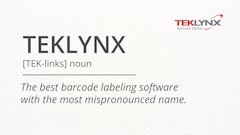
When looking at the above picture, do you feel as though you can relate? Surrounded by an insurmountable stacks of tasks, to-dos, directives, goals and plans. And he doesn't even have a computer to be bogged down by emails as well.
Or when you stumble across a gif of a cartoon character surrounded by fire saying, "I'm fine. Everything is fine." Doesn't it make you chuckle?
Oftentimes in the supply chain, these anxiety-filled sayings are all too familiar, relatable... and true!
That's because the supply chains of today are up against the clock in a number of ways, whether it's meeting California's renewable energy mandates, or FSMA's updated regulations, or even just being able to conduct business in an orderly fashion.
For starters, the third-party logistics (3PL) landscape experienced a decline in shipments, invoice amount per shipment, and total revenue compared to the previous quarter, according to a new study released by Transportation Intermediaries Association (TIA).
Specifically, total shipments saw a 4.7% quarter-over-quarter decrease and an 8.9% year-over-year decline. Invoice amounts per shipment and total revenue also faced significant drops, indicating that the fourth quarter was the toughest of 2023.
Data from Container xChange reveals that while there is a surplus of units held up in Russia, capacity in that region remains saturated. This situation has not created enough confidence for significant price drops and has resulted in a cautious approach from both buyers and sellers, leading to a gradual filling up of depots. However, the current depot pressure is not yet strong enough to prompt traders and sellers to lower their price expectations, nor is there significant pressure from buyers to increase their price expectations.
February brought mixed signals for the U.S. freight market, as both new carrier registrations and carrier exits increased, as outlined by Motive's newly released data. The entrance of new carriers (both from within the United States and abroad) into the trucking market in 2024 reveals a vastly changed landscape compared to 2019. Influenced by the global pandemic, the U.S. economy has experienced fluctuations in demand as well as periods of growth, decline, and gradual recovery. This means, new routes for importing goods into the United States are emerging.
And, the most significant concerns over the next 12 months include trucking capacity exiting the market and container supply chains at risk due to diversions around Red Sea avoidance effects, according to a new report from ITS Logistics. In addition, as Q2 approaches, the index will closely follow the International Longshoremen Association (ILA) negotiations as current ocean contracts are being deliberated.
Yes, supply chain visibility solutions and emerging technologies empower leaders to improve track and trace, instill resiliency and even mitigate risk along the way, it's the never-ending "fires" that continue to pose additional risk and headache for many of today's cold food chains.




















